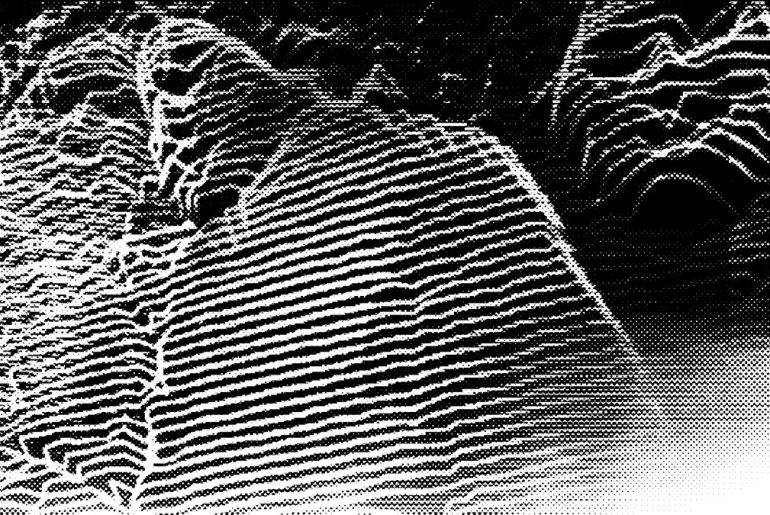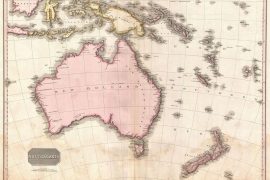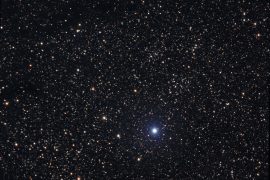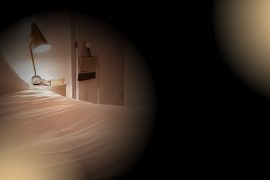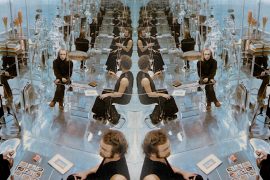And many times we’ve shared our thoughts
But did you ever, ever notice
The kind of thoughts I got (1)
Ambient Literature launched the second of our commissions this week in London. The Cartographer’s Confession, written by James Attlee, is a very different piece of Ambient Literature when considered alongside It Must Have Been Dark By Then, which for a research project interested in consolidating forms for writing, and exploring what might be possible in this space we’re defining, is a positive thing. If I was to make a very broad comparison, then Duncan Speakman’s work addresses the Ambient in our title, while The Cartographer’s Confession has ambitions toward the Literary (2).
James was kind enough to agree to an “in-conversation” discussion with the journalist Thomas McMullan during the launch event. We’ll post the audio of that discussion soon, but the richness of that dialogue made me think about the kind of affective work we’re creating. The Cartographer’s Confession meditates on the city of London as a site for migration — the central character arrives in the city as a child in the 1940s, and James remarked that there’s a non-fiction thread running through the piece, that hinges on the failed migration of swallows from these shores in 1931 due to the early onset of winter. The relationship between human and avian migration plays out as a theme throughout the story, which imbues the reader’s experience of walking a city in the open air with a particularly powerful sense of nature and climate being brought to bear on their experience. It’s the degree to which that affect manifests in a particularly medium-specific way that interested me while I listened to James and Thomas talk. A book would evoke the relationship between narrator and place through words and language. A film gets to add soundtrack and a specific connection with time and attention to that evocation, but each, I’d argue, do so at a remove from the specifics of what we might address as “presence.” Our readers are physically present within the piece, walking the city while listening and reading. The story itself only triggers as they move into the locations it is tied to, in such a way as their bodily movement occupies the role of a hand turning a page.
Maybe that’s the essence of an Ambient Literature work. To how we read them, and write them. Aside from the technology and device, aside from the interrelationship between flow and site:
You’re a person. You’re present.
How that unpacks and relates to the story being told is entirely up to the writer and you.
Among the reference points for my own approach to Ambient Literature is a revered piece of television from the 1970s. The Stone Tape, written by Nigel Kneale (of Quatermass fame, and if you don’t know that work either, then get thee to YouTube) is a ghost story that uses ambience in manner useful to our work. A team of research scientists working on a new way to record sound, become aware that the stones that comprise the fabric of the Victorian mansion in which they are working have recorded the death of a maid and are playing the recording back, manifesting as a ghost, repeating the sequence of actions that led to her demise. The Stone Tape draws on the residual haunting hypothesis put forward by Thomas Charles Lethbridge in 1961, and H. H. Price in 1940, suggesting that our ability to perceive a haunting is analogous to being able to ’tune in’ to the particular frequency on which the environment is transmitting (3). This seems to me to address the manner by which we’ve described Ambient Literature works as requiring “activation” by their readers. They are potential stories in the fabric of the city, becoming visible (or audible, or experiential) when a reader is present to trigger them. Hauntings, and the uncanny, figure to some extent in each of the commissions we’ve produced so far. Duncan Speakman’s It Must Have Been Dark By Then uses voices from a temporal and geographic distance to deliver a particularly uncanny affect. The Cartographer’s Confession isn’t a ghost story, but James Attlee made mention of “releasing ghosts back into the city” as a way of describing how he made use of old photographs to construct the characters within his story. As for Kate Pullinger’s Liquid Continent; it would be spoiling to talk about details before the work is finished, but there’s a haunting quality to the way Kate is approaching writing the piece.
I suggested at the start of this year that the eerie and the uncanny were ways to begin to approach an Ambient Poetics. These works have a disembodied quality to them too, a potential that is drawn out by the presence of their reader. Like a residual haunting, their particular affect is shaped by their delivery, by the imposition of experience into the world. Maybe it’s no coincidence that our Ambient Literature works (so far) haunt the spaces they’re in.
—Tom Abba
Notes
- Will Oldham. 1999. See http://www.youtube.com/watch?v=LAriDxTeed8 ↩︎
- That’s a very reductive comparison, and as It Must Have Been Dark By Then is a Juried choice in Digital Storytelling at IDFA in November, then it’s a redundant one too. But the difference was too good a pun not to make. ↩︎
- Thankyou Wikipedia: https://en.wikipedia.org/wiki/Stone_Tape ↩︎


